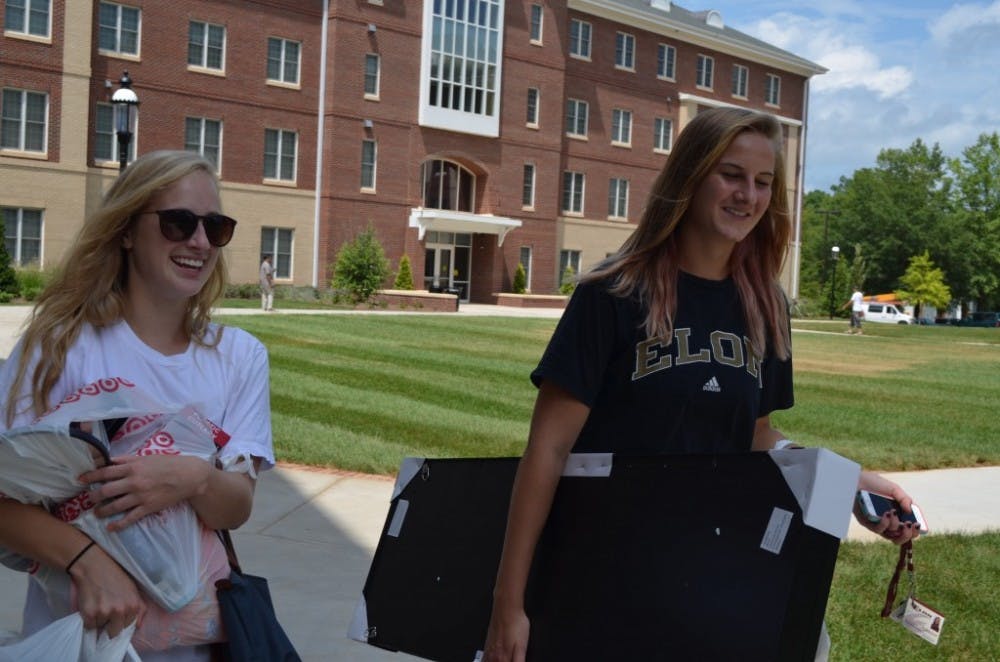As Matt Cesari walks onto campus as an Elon University student for the first time on Friday, he will be a part of history. Keeping with previous years, Elon will welcome its largest class size in history, with 1,496 students expected to move in.
For Cesari, the diversity of programs was the most appealing factor about Elon.
“If you have a passion, Elon has a way you can show, develop and share that passion,” he said. “It’s awesome to go to a school that can be bragged about for its academia as well as its artistic side.”
The number of incoming students is a reflection of the applicant pool. The school received a record high of 10,442 applicants.
While applicants and incoming students have risen, the demographics of the Class of 2018 are similar to previous years, including the lower number of in-state students.
North Carolina still makes up about 16 percent of the incoming class, the largest of the 44 states represented. For Cesari, a graduate of Leesville Road High School in Raleigh, this isn’t a bad thing.
“I didn’t want my college experience to be seeing the same old people from high school, just in a different setting,” he said. “I wanted to see some new faces and get a really unique experience. “
Greg Zaiser, vice president of admissions and financial planning, said this could be because of state legislation. Historically, state residents going to Elon received a small grant based on state residency alone. In 2012, N.C. legislation removed the grant to create a new program restricted to students with financial aidfrom the state.
“I’m thrilled we’ve been able to hold our own in the state without North Carolinians,” Zaiser said. “I’d like it to remain our top state, but we’re out and about more.”
Incoming students who identify as ethnically diverse compose 17 percent of the freshman class. That number has remained the same three of the past four years. But diversity overall has increased when factoring in socioeconomics.
“The percentage of students who are eligible for federal funds shows we are really investing in socioeconomic diversity,” he said. “I’m pleased with the fact that Elon is more accessible for students who might not be able to attend.”
Twelve percent of the Class of 2018, the highest amount in the school’s history, will receive the Pell Grant, a federal grant dependent on financial need, schools costs and full-time student status.
Other changes occurred in international students. This year, Elon will welcome 98 new international students – five fewer from last year - from 18 countries, not including the United States.
Male-to-female association has remained similar to previous years, with females making up 61 percent of the incoming class, mirroring the national trend of liberal arts schools receiving more female applicants.
No matter the demographics, Zaiser has noticed a continuous rise in quality from incoming students.
“Admissions looks at where else these students apply – Wake Forest, University of North Carolina at Chapel Hill, Bucknell University, University of Richmond – are selective schools,” Zaiser said. “This speaks very well of Elon and the students we enrolled in.”


